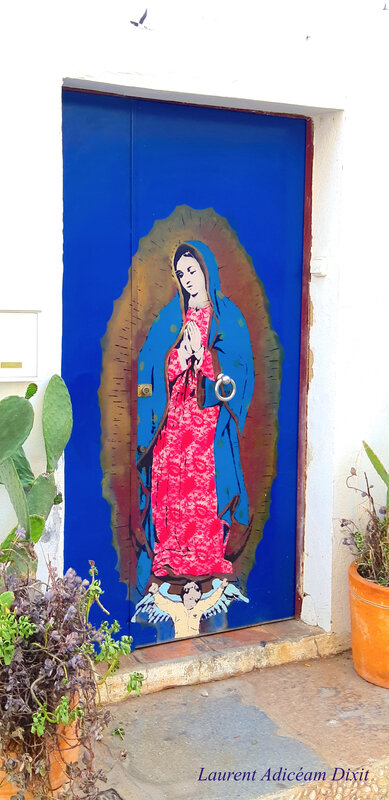THE NATIVITY OF MARY - LA NATIVITE DE MARIE - CELEBRATION DATE - FETE
The Nativity of Mary, September 8, 2020
The Virgin Mary may be the mother of Jesus, but this date is not a holiday! Catholics attach more importance to the feast of December 8: the Immaculate Conception, for example, than to this one. However, Mary is in their hearts as the mother and new Eve who obeyed God's will without breaking it. The Virgin Mary, during her lifetime, in the 1st century A.D., is a Jewish woman belonging to a society with strong patriarchal mores. Discreetly mentioned in the Gospels, she later became an icon and a spiritual source for Christians. The latter exalt her through Marian celebrations to the point of being interpreted as Mariolatry, a veneration equal to that dedicated to God. Don't believers also love her for what she represents? Proclaimed "Patroness of France" by Pope Pius XI in 1922, Mary is also "Notre-Dame" Mother of Christ, Mother of God, never separated from her son, she is the saving key for the faithful, the one who protects them and watches over the order of the world.
The origin of Mary's nativity
Her living places, dates of birth and death are ignored, as well as her childhood, whereas in the 4th century, the Protegospel, an apocryphal book, by the apostle James, and Saint Gregory of Nyssa tell that Mary would be the daughter of Anne and Joachim. According to the oriental tradition, a first church was erected in dedication to the Virgin on September 8 near the Probatic pool in Jerusalem, in the middle of the 5th century. In 431, the Council of Ephesus declares that she is "Theotokos", mother of God because she is the mother of Jesus who is both man and God. In the 6th century, the date of her birth in Jerusalem was set for 8 September, even though from the 3rd century onwards, her feast day radiated in the East, particularly in Byzantium, as evidenced by a hymn, a prayer to the Virgin "Sub tuum praesidium" (under your merciful protection) written in Greek. Others, like the saints, will carry her to the skies: Justin, Irenaeus, John Chrysostom, ...through collections and canons. In the 5th century, according to a little-known tradition and yet proven in France, the Virgin Mary appeared to the bishop of Angers, Maurille, who has been sanctified ever since. Mary invites him by the grace of the Lord and of her son Jesus to institute her date of birth. And since then, in Anjou her birthday is commemorated. Later, at the very end of the 6th century, the Synaxis of Constantinople mentions that the Emperor Maurice instituted by decree his nativity on 8 September. At the same time, Rome hosted the four great oriental Marian feasts: the Annunciation, the Assumption, the Nativity of Mary and the Hypapante (Presentation of Jesus in the Temple, known as the Feast of Candlemas). Pope Sergius I, of Syrian origin, wished in the 7th century that these celebrations be accompanied by solemn processions as in the East. In the West, Marian devotion was more marked in the 11th century, particularly in the monasteries (Cluny, Cîteaux, etc.) and then among the mendicant orders. In the 12th century, praise was expressed through prayers, hymns, Marian pilgrimages, and gradually, the Catholics, in cherishing and invoking Mary, perceived her as a protective mother, a mediator who would also intercede for them with the Holy Trinity. At the end of the Middle Ages a flowering of Marian feasts developed, from biblical feasts to the so-called original feasts. In the 20th century, in the Latin Church, the Second Vatican Council wanted Marian doctrine to be reinserted in its triple scriptural, Christological and ecclesiological roots.
The meaning of Mary's nativity
She helped save her parents' honour by coming into the world because not having children was considered a disgrace in her day. Through Mary, the pure chosen one, God's work will be accomplished. The Immaculate Conception is a help also for Catholics who can bring her their prayer intentions in all circumstances, especially for women who wish to be mothers.
In the West, in the 5th century, Pope Gelasius I of Berber origin said in the prayer of the Sacramentary: "May the glorious intercession of Saint Mary, whose day of happy birth we remember, help us Lord, we pray to you. "Pope Gregory the Great, in the seventh century, made the same apology through Marian liturgical piety. Believers receive Mary as their mother, a gift given to them by Jesus before dying on the cross, and this feast invites the faithful to contemplate Mary's lowliness: from child to her state of Grace in the service of her son, Jesus. Also, Saint Louis-Marie Grignion de Montfort presents the Virgin through a spiritual metaphor as a tree that will be born in the life of the believer planted by the Holy Spirit and rising up to God in his devotion. Paul VI offers her in the Eucharistic prayers a place of choice, proper to her nativity, he says "Mary cooperates with our birth in God" and Saint Thérèse of Lisieux makes her first vows on September 8, 1890, for her, the nativity of Mary is the day dreamed of to become the bride of Jesus. This feast is now practised in the liturgy or during processions, especially in Corsica where she has been queen since 1735. It is a providence for men who entrust themselves to Mary, flower of Israel, bearer of love, hope and model of faith, because Jesus came into the world through her, and wishes that Christians, as true sons, go to him through her, his mother and also of all.
Links :
Mt 1,18-25: Divine Motherhood
Mt1, 1-17: Three periods
Pour ma version en français : La nativité de Marie ici
Laurent Adicéam Dixit






/http%3A%2F%2Fstorage.canalblog.com%2F52%2F26%2F1558955%2F125177929_o.jpg)
/http%3A%2F%2Fstorage.canalblog.com%2F89%2F48%2F1558955%2F124143333_o.jpg)
/http%3A%2F%2Fstorage.canalblog.com%2F64%2F03%2F1558955%2F122915711_o.jpg)
/http%3A%2F%2Fstorage.canalblog.com%2F61%2F23%2F1558955%2F118590371_o.jpg)